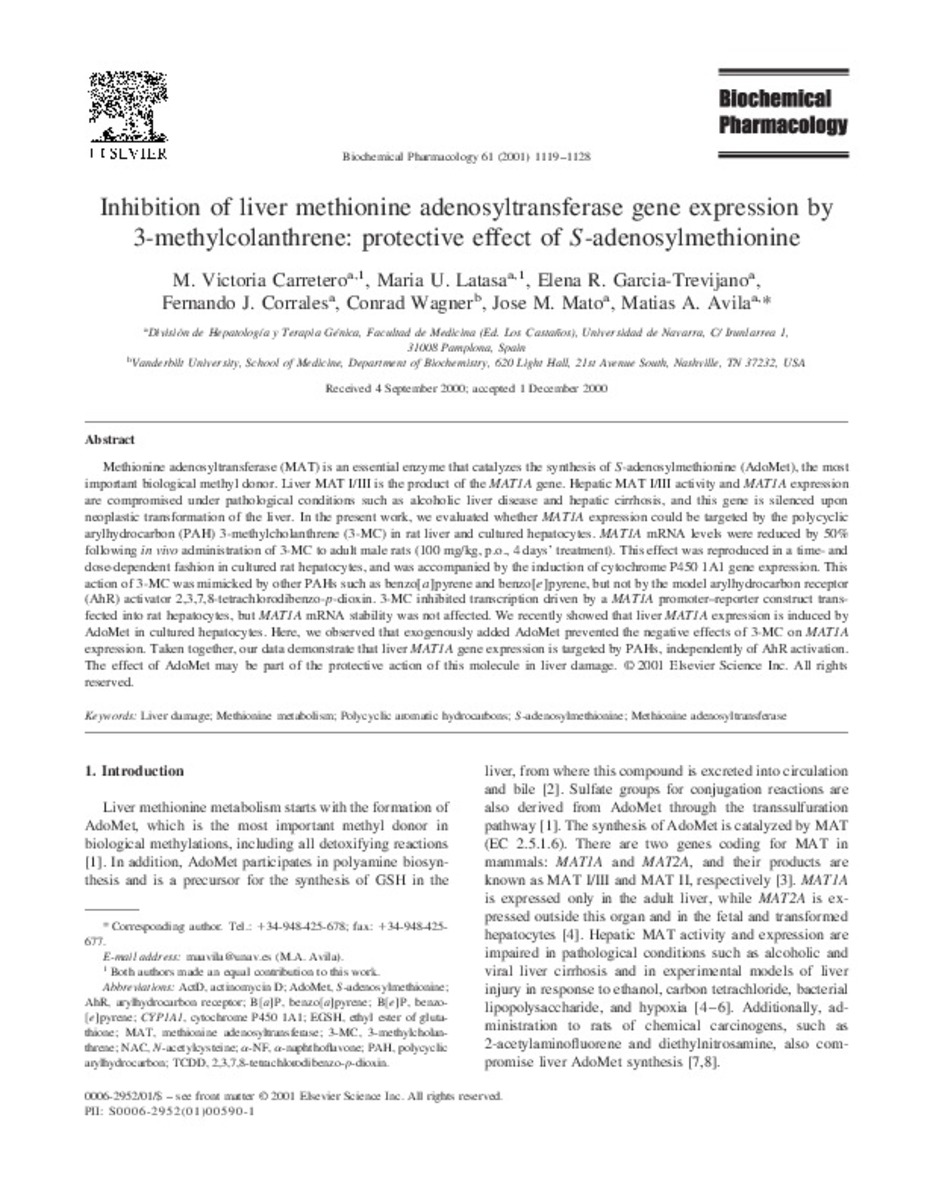Inhibition of liver methionine adenosyltransferase gene expression by 3-methylcolanthrene: protective effect of S-adenosylmethionine
Palabras clave :
Liver damage
Methionine metabolism
Polycyclic aromatic hydrocarbons
S-adenosylmethionine
Methionine adenosyltransferase
Fecha de publicación :
2001
Cita:
Carretero MV, Latasa MU, Garcia-Trevijano ER, Corrales FJ, Wagner C, Mato JM, et al. Inhibition of liver methionine adenosyltransferase gene expression by 3-methylcolanthrene: protective effect of S-adenosylmethionine. Biochem Pharmacol 2001 May 1;61(9):1119-1128.
Aparece en las colecciones:
Estadísticas e impacto
0 citas en

0 citas en

Los ítems de Dadun están protegidos por copyright, con todos los derechos reservados, a menos que se indique lo contrario.







